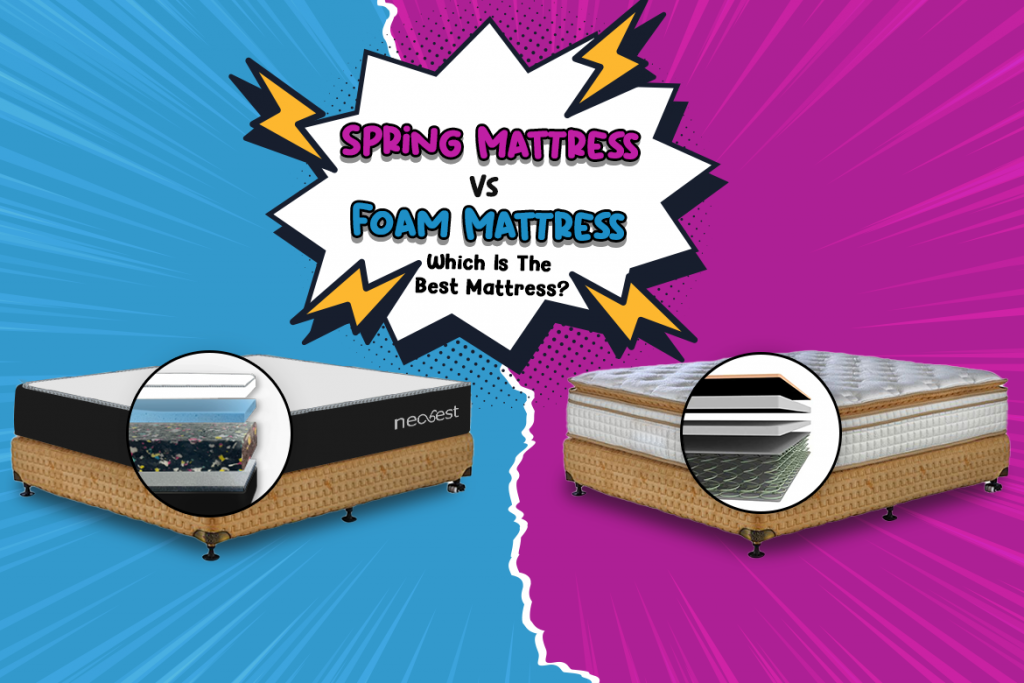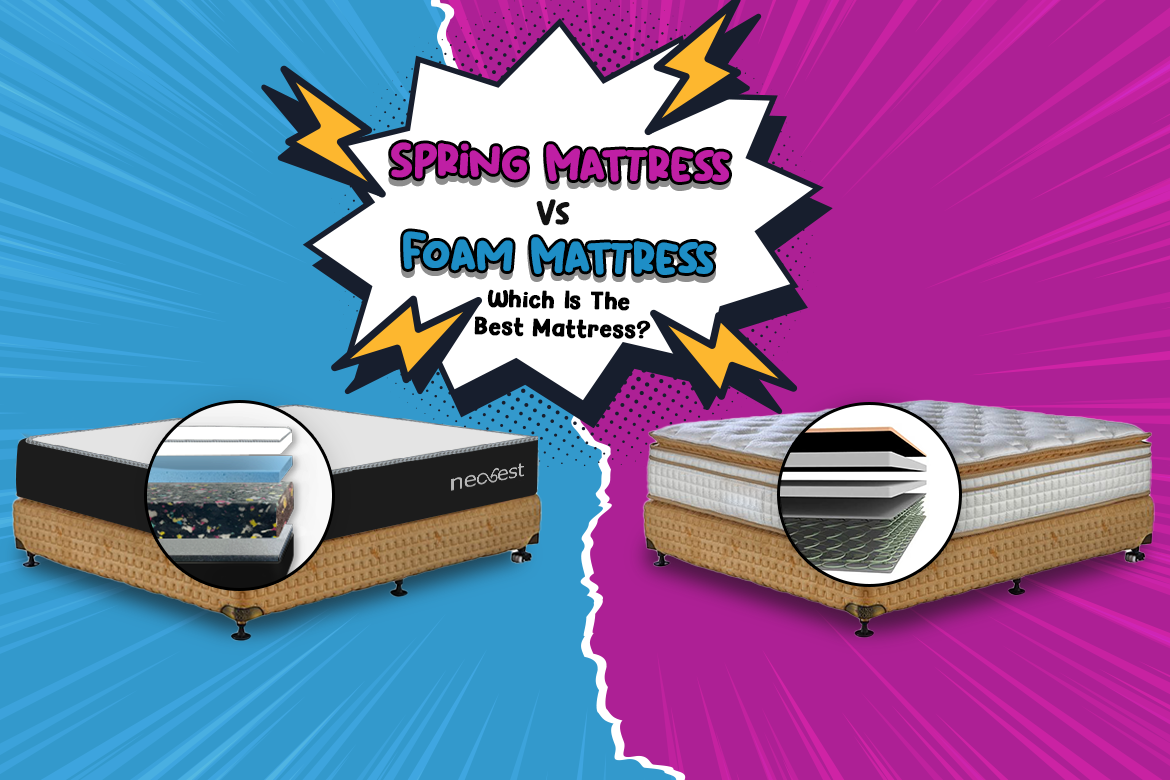
What kind of mattress is the best? This is quite a debatable topic amongst experts in the industry. With each type of mattress having its own set of pros and cons, it is difficult to conclude which mattress is the best mattress. Perhaps, a better way to conclude would be to accept that no mattress is fit for all. While you may be comfortable sleeping on a spring mattress, your partner may find themselves sleeping more comfortably on a foam mattress or vice versa.
The main difference between pocket spring vs memory foam mattresses is the material used to make them. The traditional coir spring mattress is based on a structure of coiled metal and springs. This coiled spring and the metal frame are surrounded by a protective layer of foam. We do not feel the spring underneath because of the added layers beneath. On the other hand, foam mattresses use an artificial material called memory foam, made using polyurethane. A special characteristic of memory foam is its viscoelasticity, which allows it to mould itself as per the sleeper’s shape. This enables extra support and pressure relief for the sleeper.
But how can you decide which one should you buy, foam or spring mattress? A number of factors come into play while choosing the best mattress. This includes firmness, sleep position, body type, pressure-relief, temperature sensitivity, ventilation, odour, spinal alignment, motion isolation, durability, maintenance and affordability. Compare how each factor varies between foam vs spring mattresses to understand which is the best mattress for you.
Spring mattress vs Foam mattress
The firmness of the mattress: When you compare a spring bed vs a foam bed, the immediate difference you would notice is the firmness of each. Spring mattresses are usually medium-firm and tend to be bouncy due to the springs, which are flexible and act under pressure. Foam mattresses are usually softer and have the ability to contour the sleeper. They literally hug the sleeper, offering a cosy and relaxing sleep.
Sleep position: The spring mattress is a good choice for back sleepers since they support the spinal area and relieve back pain by reducing pressure over the lumbar area. Additionally, being bouncy, spring mattresses allow combo sleepers to change positions throughout the night without much effort swiftly. At the same time, side sleepers and stomach sleepers experience better sleep when they use foam mattresses. Foam mattresses’ contouring ability helps them maintain spinal alignment and a balanced sinking of their shoulders and hips without exerting too much pressure over these areas.
Body type: If one is a heavy sleeper, they may find it easier to get up and move out of a spring mattress in comparison to foam mattresses. This is obviously because spring mattresses offer bounce and pushback support, whereas foam mattresses are soft and sink in heavier people, making it difficult for them to bounce and get up. Lightweight people can be at risk of experiencing pressure points on a spring mattress and therefore are better off with a foam mattress, which offers them cushioned and soft support.
Pressure relief: Spring mattresses are pretty uncomfortable in some types of sleepers and exert pressure on joints such as shoulders, hips and knees due to poor spinal alignment. Spring mattresses distribute weight unevenly and hence, form pressure points for some sleepers. They are best to avoid if you experience joint pains. On the other hand, foam mattresses are ideal for those suffering from arthritis, fibromyalgia and bone pain because they distribute weight evenly and do not exert pressure on joints. Instead, they support your body, fill the gaps along its curves and take care of your pressure points.
Temperature sensitivity: The overall feel of both types of mattresses is affected by the room temperature as well as body heat. A spring mattress does not conduct body heat and allows sufficient air circulation between the coils, making it temperature neutral. Whereas a huge disadvantage of memory foam is that it softens as it heats up and hardens when it cools down. While it hugs you as it conducts your body heat, it can also make your body heat up and make your sleep a hot experience.
Ventilation: Due to the way the spring coils are structured, there is sufficient ventilation between the coils, helping us sleep cool. On the contrary, regular foam mattresses allow no air passage, resulting in heating up and increasing our body temperature. However, certain foam, such as convoluted foams, and ventilated, copper-infused foams, absorb heat from our bodies and ensure a cool sleeping experience on foam mattresses.
Odour: Spring mattresses are not manufactured using heavy chemicals, and as metals do not have any strong smell, the odour from spring mattresses is practically negligible. Whereas most foam mattresses use chemicals derived from petroleum and can have a mild to strong odour, which gradually weakens over a few days.
Motion Isolation: This is an important factor if you share your bed with someone. Spring mattresses lack motion isolation; therefore, changing positions often while sleeping may disturb your partner’s sleep. Foam mattresses absorb movements and are ideal for bed-sharing.
Conclusion
Both spring and foam mattresses are equally durable. But on the maintenance and cost front, a memory foam mattress can be pricier and require more maintenance. If you want to enjoy the benefits of both types of mattresses, you can opt for a memory foam spring mattress. We hope our guide was helpful in deciding which mattress you should choose.


One Comment